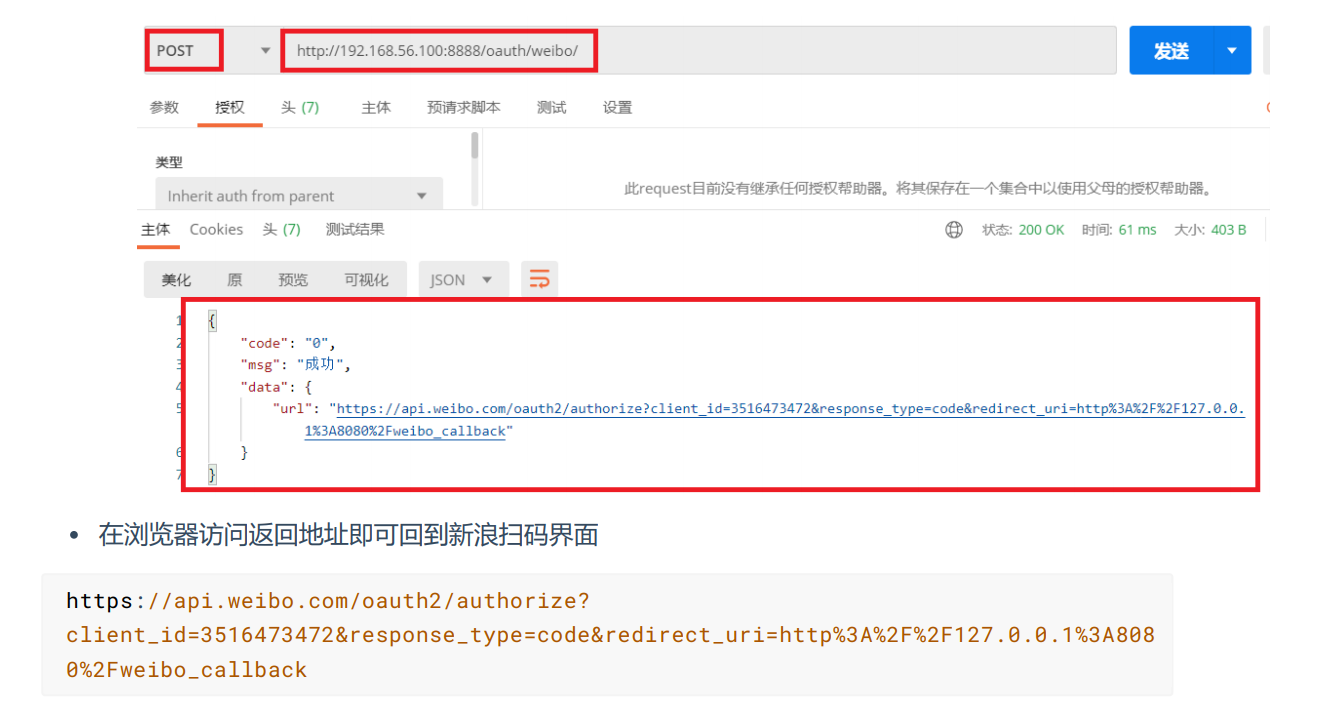1.创建apps/oauth模块进行oauth认证
'''2.1 在apps文件夹下新建应用: oauth''' cd syl/apps python ../manage.py startapp oauth # 切换到apps文件夹下执行创建命令
'''2.2 添加子路由: oauth/urls.py''' from django.urls import path from . import views urlpatterns = [ ]
'''2.3 在syl/settings.py中添加应用''' INSTALLED_APPS = [ 'oauth.apps.OauthConfig', ]
'''2.4 在syl/urls.py主路由中添加''' urlpatterns = [ path('oauth/', include('oauth.urls')), ]
2.生成微博授权URL接口
1.1 添加子路由: oauth/urls.py
urlpatterns = [ path('weibo/', views.WeiboUrl.as_view()), # /oauth/weibo/ 返回微博登录地址 ]
1.2 syl/settings.py 中配微博地址
1.2 视图函数: oauth/views.py
from rest_framework.permissions import AllowAny from rest_framework.response import Response from rest_framework.views import APIView from urllib.parse import urlencode # 生成前端跳转到微博扫码页面的url class WeiboUrl(APIView): ''' 生成微博的登陆页面路由地址 https://api.weibo.com/oauth2/authorize? # 微博oauth认证地址 client_id=4152203033& # 注册开发者id response_type=code& redirect_uri=http://127.0.0.1:8888/oauth/callback/ # 获取code后将code回 调给后端地址 ''' # 自定义权限类 permission_classes = (AllowAny,) def post(self, request): url = 'https://api.weibo.com/oauth2/authorize?' # 微博授权的url地址 data = { 'client_id': '3516473472', #WEIBO_APP_KEY, 'response_type': 'code', 'redirect_uri': 'http://127.0.0.1:8888/oauth/callback/', # VUE的回调,微博后台授权的回调地址 } weibo_url = url + urlencode(data) # https://api.weibo.com/oauth2/authorize?client_id=4152203033&response_type=code&redirect_uri=http://127.0.0.1:8000/api/weibo_back/ # return Response({'weibo_url': weibo_url}) return Response({'code': '0', 'msg': '成功', 'data': {'url': weibo_url}})
3.测试生成微博售前URL接口
测试接口获取新浪微博地址
http://192.168.56.100:8888/oauth/weibo/
